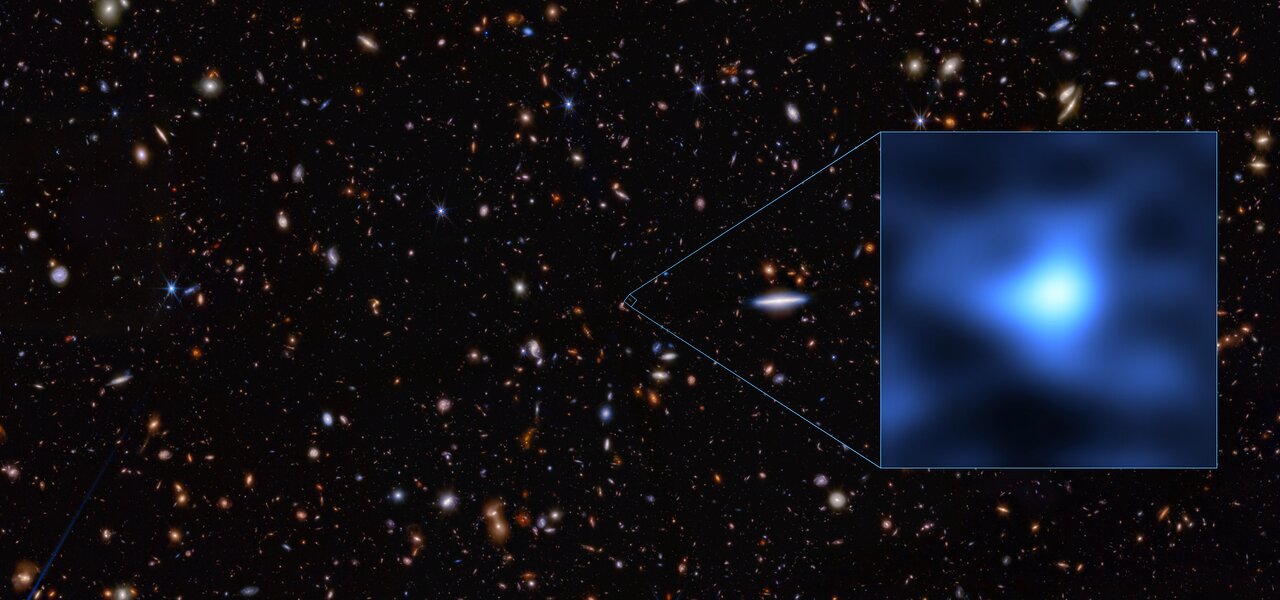Two different groups of astronomers have discovered oxygen in the most distant known galaxy, JADES-GS-z14-0. This discovery forces us to rethink existing ideas about how quickly galaxies formed in the early Universe.

JADES-GS-z14-0 was discovered last year by the James Webb telescope. It is currently the farthest we know of: its light took 13.4 billion years to reach Earth. That is, we see it as it was when the age of the Universe was less than 300 million years, or only 2% of today’s age.
The first galaxies began life as ultramassive stars that were mostly made of light elements such as hydrogen and helium. During evolution, they synthesized heavier elements such as oxygen, which were dispersed after their deaths and then incorporated into the next generation of luminaries.
Until recently, researchers believed that at the age of 300 million years, the universe was still too young for galaxies composed of heavy elements to exist. However, two independent studies using the Atacama Large Millimeter/submillimeter Array (ALMA) have shown that this is not the case. JADES-GS-z14-0 contains about ten times more heavy elements than expected. One of them is oxygen.

Scientists figuratively compare this discovery to finding a teenager where one would expect only an infant. JADES-GS-z14-0 is much more chemically mature than it should be. This suggests that the formation of the first galaxies was much faster than current models suggest.
The detection of oxygen also allowed astronomers to refine the distance to JADES-GS-z14-0 with an error of just 0.005%. This is analogous to an accuracy level of 5 cm at a distance of 1 km. Scientists say this will help them better understand the properties of distant galaxies.
According to ESO


